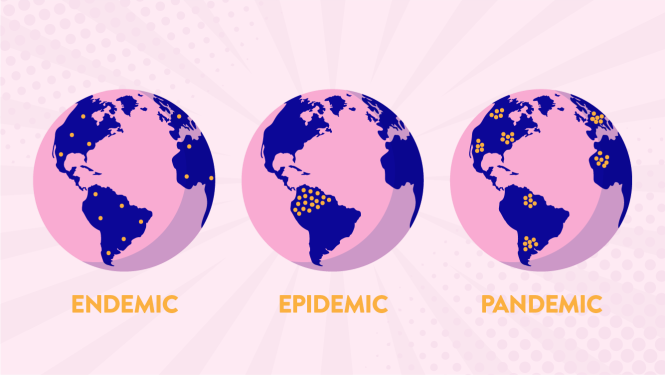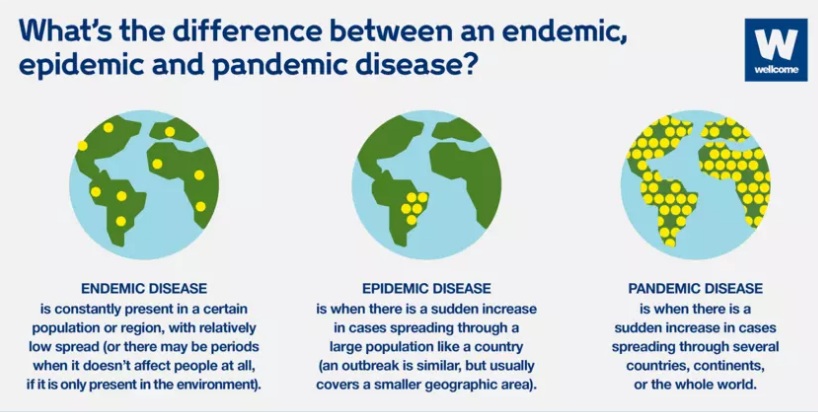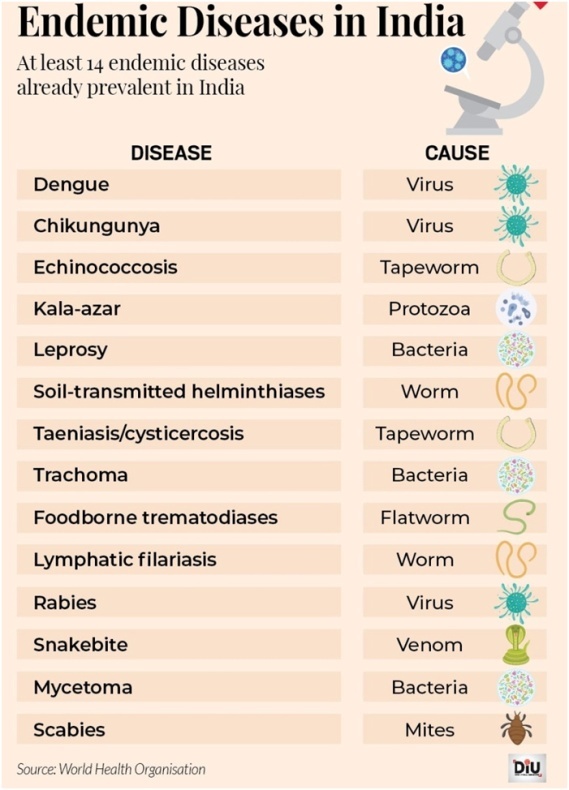Description

Disclaimer: Copyright infringement not intended.
Context:
- The UK has eased restrictions while new measures in California approach Covid-19 as being endemic.
Differences between Pandemics, Epidemics, Endemic etc:
- The WHO defines pandemics, epidemics, and endemics based on a disease's rate of spread.
- Thus, the difference between an epidemic and a pandemic isn't in the severity of the disease, but the degree to which it has spread.

Outbreak:
- An outbreak is a rise in disease cases over what is normally expected in a small and specific location generally over a short period of time.
- Foodborne diseases caused by Salmonella contamination provide frequent examples of this.
Epidemics:
- Epidemics are essentially outbreaks without the tight geographical restrictions.
- The Ebola virus that spread within three West African countries from 2014–2016 was an epidemic.
Pandemic:
- A pandemic is an epidemic that spreads across many countries and many continents around the world.
- Examples include those caused by influenza A(H1N1) or “Spanish Flu” in 1918, HIV/AIDS, SARS-CoV-1 and Zika virus.
Endemic:
- The word “endemic” comes from the Greek endēmos, which means “in population”.
- An endemic virus is relatively constant in a population with largely predictable patterns.
- Viruses can circulate endemically in specific geographical regions, or globally.
- Ross River virus circulates endemically in Australia and the Pacific island countries, but is not found in other regions of the world.
Endemic stage of a pandemic: SARS COV-2:
- An infection becomes endemic when the rates become static in a given geographical location.
- The pathogen causing the disease — SARS-CoV-2 in this case — is likely to remain in circulation without causing large outbreaks as witnessed over the last two years.
- Endemic means that the virus will continue circulating in the population and there will be periodic ups and downs when the conditions are favourable to the virus and less favourable to humans.
- For example, flu which goes up in the winters and when the season is changing because of lower immunity in people or dengue which goes up after monsoons because of the availability of vectors.
- Covid-19 also may become seasonal and cause disease in the vulnerable.

https://indianexpress.com/article/explained/explained-pandemic-and-endemic-7784540/












